Evacuated U-bend Solar Collector, Paper Numerical Validation, ANSYS Fluent training
$200.00 $100.00 Student Discount
In this project, a 3D simulation of a U-tube solar collector is carried out while the radiation of the Sun is concentrated on the tube walls.
Click on Add To Cart and obtain the Geometry file, Mesh file, and a Comprehensive ANSYS Fluent Training Video.To Order Your Project or benefit from a CFD consultation, contact our experts via email (info@mr-cfd.com), online support tab, or WhatsApp at +44 7443 197273.
There are some Free Products to check our service quality.
If you want the training video in another language instead of English, ask it via info@mr-cfd.com after you buy the product.
Description
Project Description
A solar collector is an object that collects and concentrates solar radiation from the Sun and converts it into heat energy. These objects are primarily used for active solar heating and allow for water heating for domestic use. These collectors are typically mounted on the roof and must be very well-made and robust as they are exposed to various weather conditions. One of the popular types of solar collector is the Evacuated U-bend Solar Collector, which provides the combined effects of a highly selective surface covering and the vacuum insulation of the absorber element, thereby resulting in higher heat extraction efficiency and outlet temperatures than those for the flat-plate collector in a broad operating temperature range.
Moreover, because the U-tube collector uses an evacuated glass tube, the decrease in the efficiency of the solar collector at high operating temperatures is relatively small because of the low heat losses.
Evacuated U-bend Solar Collector Project Description
In this project, a 3D simulation of a U-tube solar collector is carried out while the radiation of the Sun is concentrated on the tube walls. The heating energy is considered as uniform heat flux all over the tube.
The tube wall has a thickness of 0.5 mm made of copper; heat will pass the copper due to conduction and then enters the flow because of the convection phenomenon.
Here we have validated the paper:
‘Effect of nanoparticle shape of Al2O3-Pure Water nanofluid on evacuated U-Tube solar collector efficiency
Geometry & Mesh
The geometry of the solution is a 3D tube whose diameter and length are 8mm and 3.8m, respectively.
Design Modeler software is used to create the geometry of the solution.
ANSYS Meshing software is used for generating the mesh of the solution. The elements are all tetrahedra, and the boundary of the tube has a boundary layer (Inflation).
The number of the elements is precisely 1645878:
The charts below show the quality of the elements.
The elements’ minimum, maximum, and average quality are 0.056, 1, and 0.53103, respectively.
Evacuated U-bend Solar Collector CFD Simulation
We consider several assumptions to simulate the present model:
- We perform a pressure-based solver.
- The energy equation is on.
- The present model is steady.
- The effect of gravity is considered.
The following table represents a summary of the defining steps of the problem and its solution:
| Material Properties | |
| Name (Fluid) | Water liquid |
| Boundary Condition | |
| Type | Amount (units) |
| Outlet | |
| pressure outlet | gauge pressure = 0 pa |
| wall | |
| Wall | No-slip
Heat flux = 950 w/m2 |
| Mass-flow-Inlet | |
| Inlet | Mass flow rate = 0.01 kg/s
Temperature = 293 k |
| symmetry | |
| symmetry | |
| Models | |||
| Energy | on | ||
| Turbulence models | |||
| viscous model | Laminar | ||
| Solution methods | ||
| SIMPLE | pressure velocity coupling | |
| Second-order upwind | pressure | spatial discretization |
| Second-order upwind | momentum | |
| Second-order upwind | energy | |
| Initialization | ||
| standard | initialization method | |
| Inlet | Compute from | |
| 0 (Pa) | gauge pressure | |
| 0 (m/s) | y-velocity | |
| 0 (m/s) | x-velocity | |
| -0.31947 (m/s) | z-velocity | |
| 293 k | temperature | |
| Run calculation | ||
| Number of Iterations | 300 |
Results & Discussion
At the end of the solution process, two-dimensional contours of pressure, velocity, and tube temperature are obtained.
As water flows through the tube, the heat due to uniform heat flux on the wall warms it up so the outlet temperature would be higher than the inlet.
As can be seen in the results, the average Nusselt number of the Evacuated U-bend Solar Collector is obtained and is compared by the paper chart.
our simulation: 4.86
paper result: 4.95
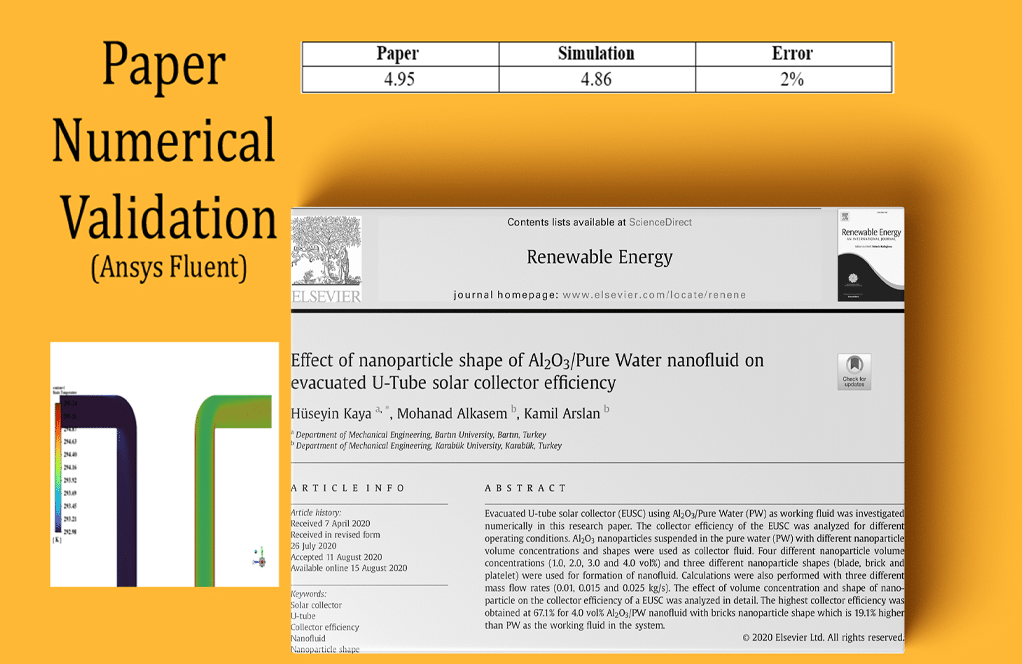
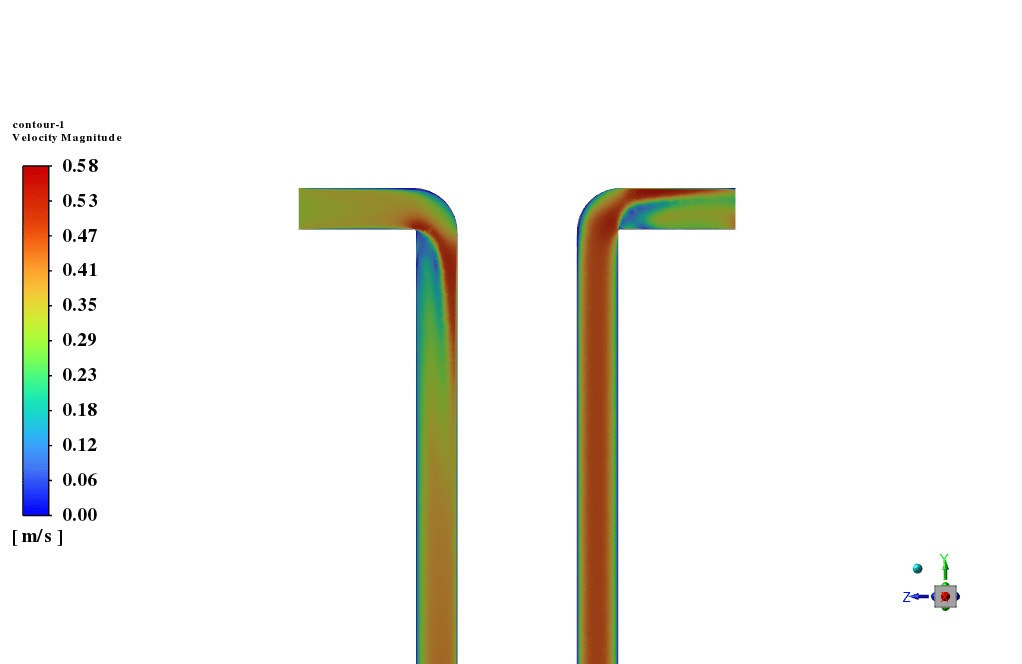
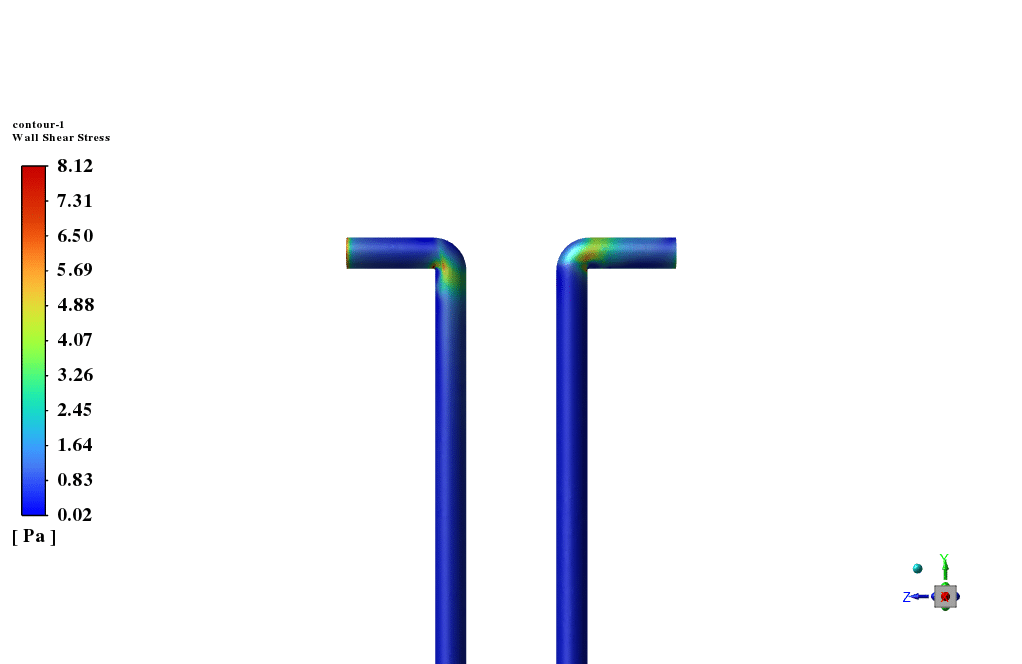
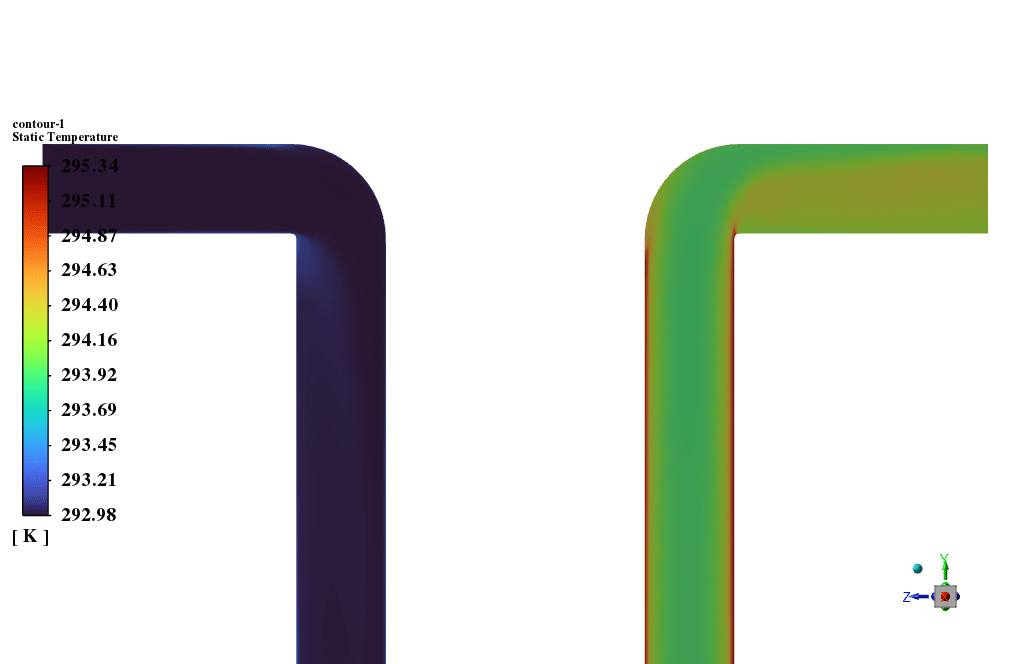
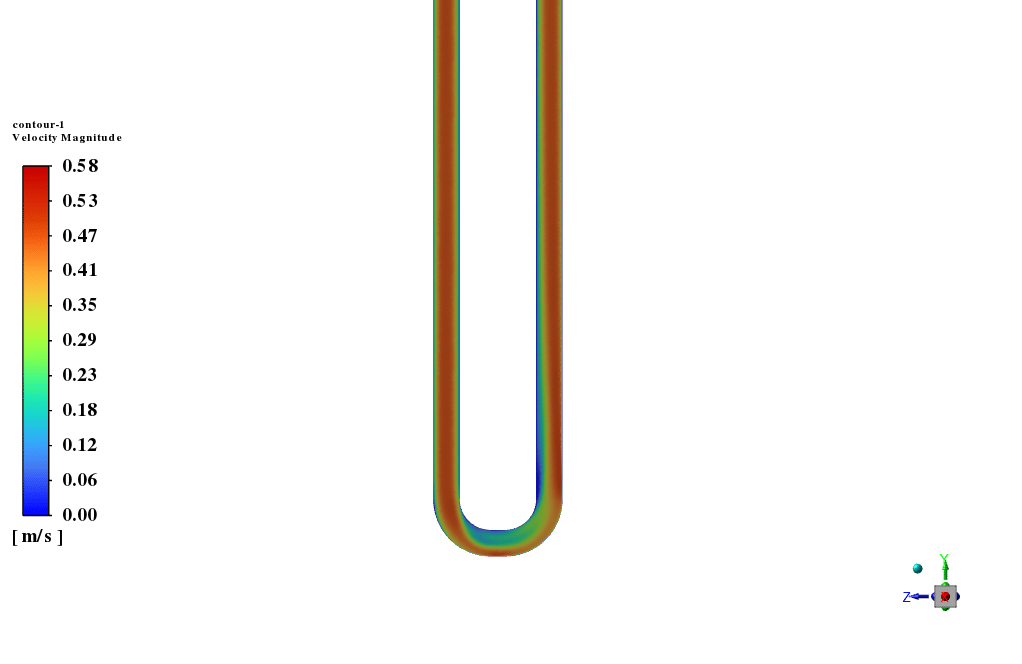
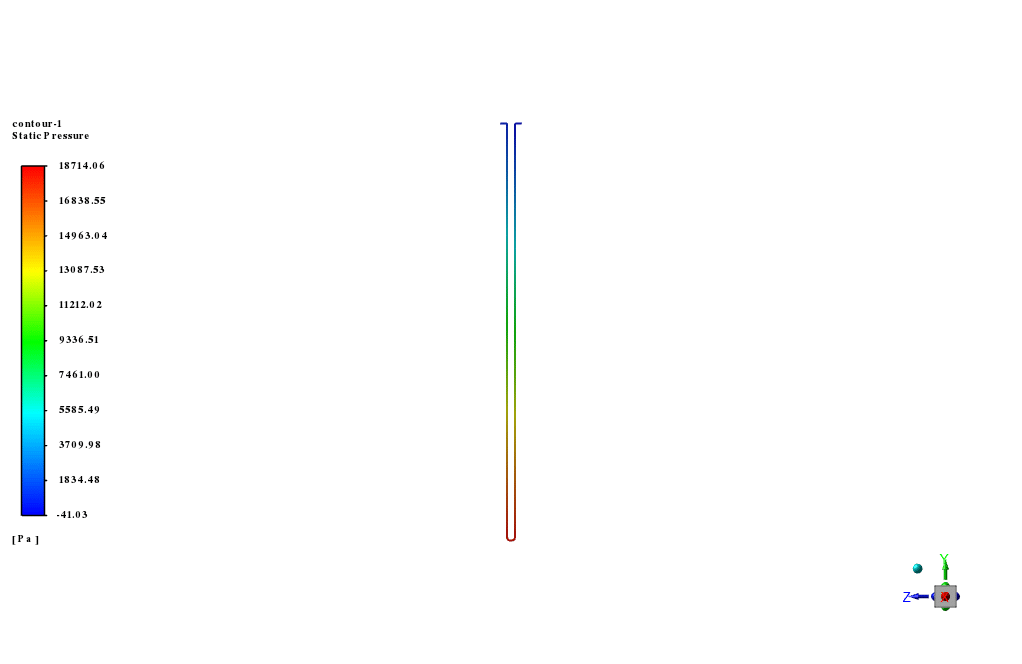
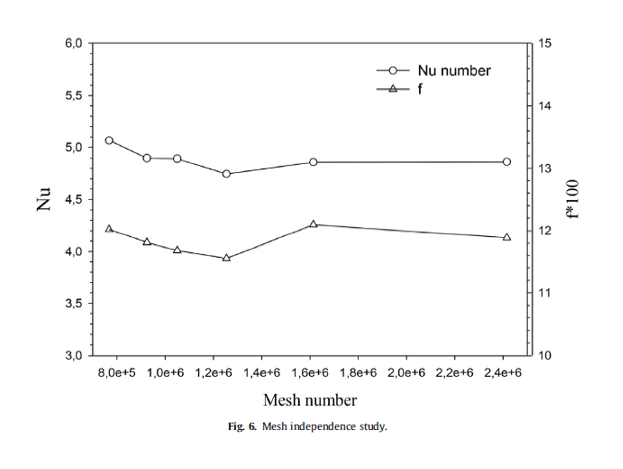
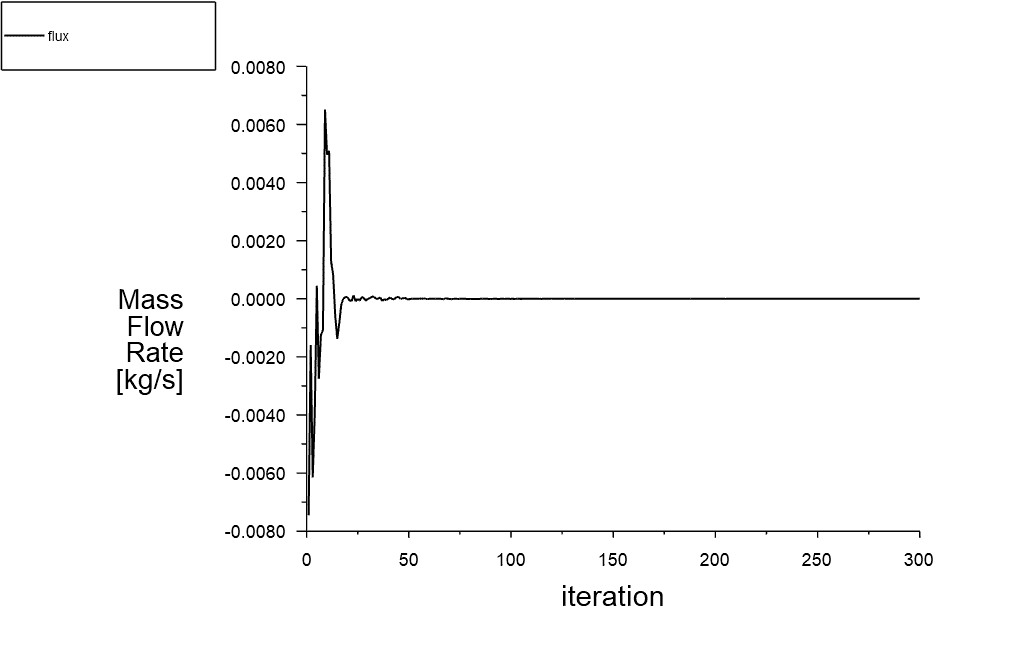
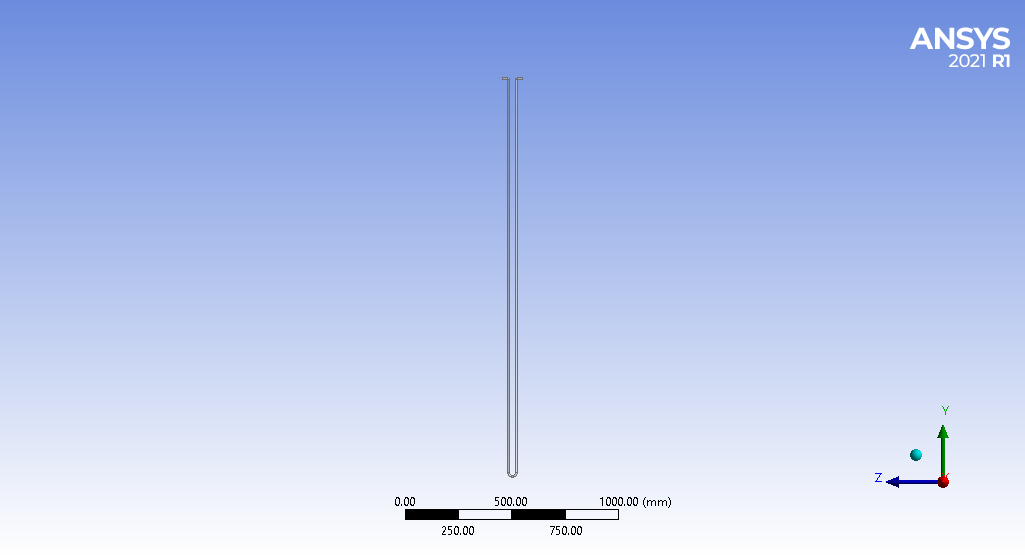
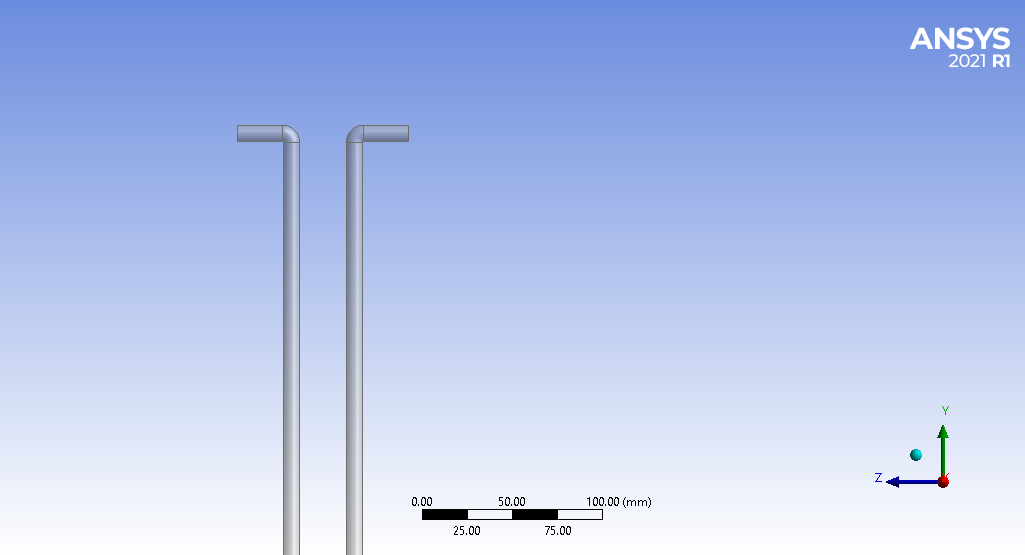
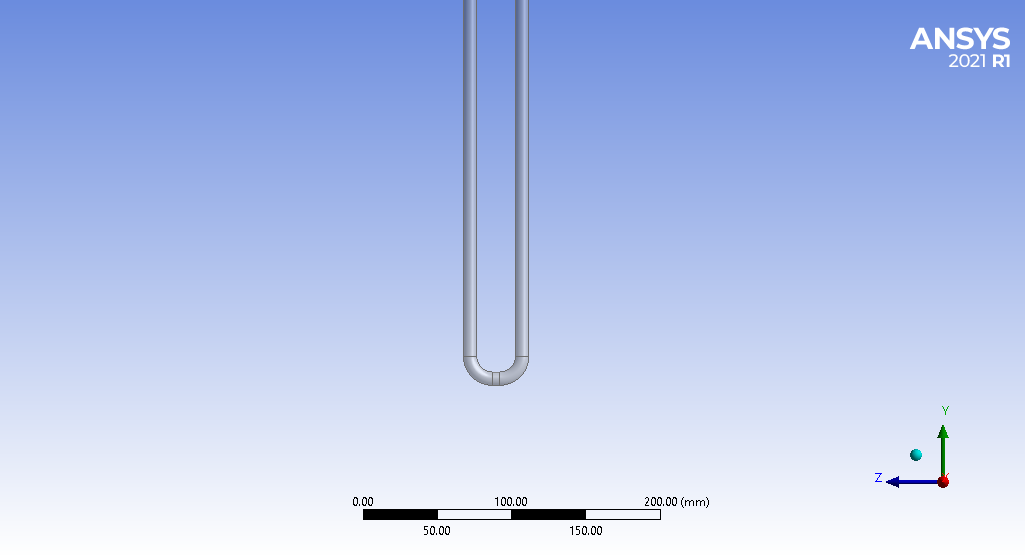
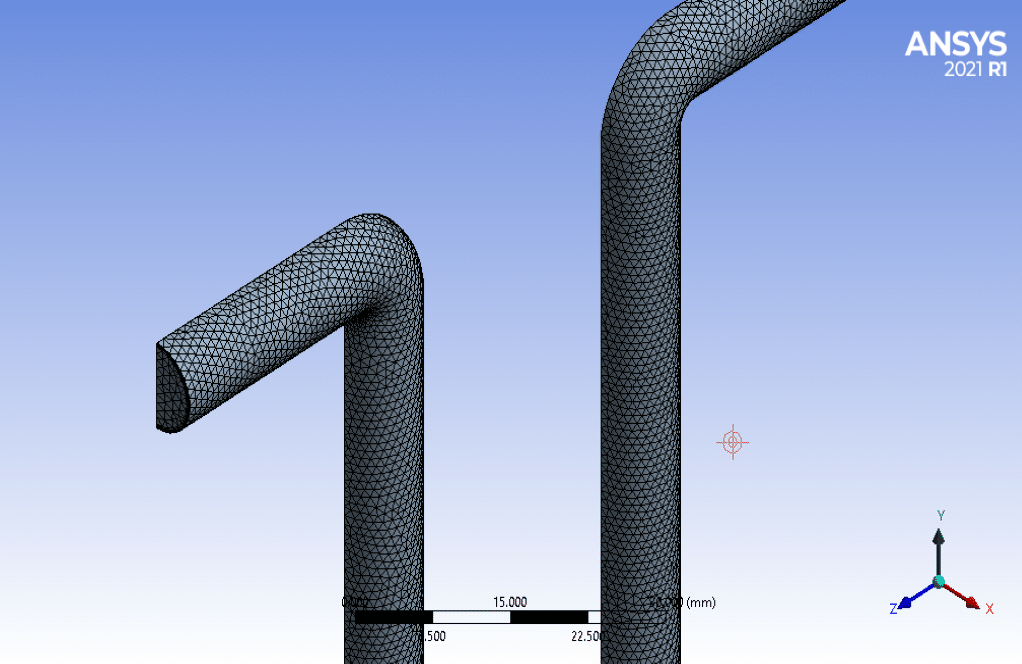
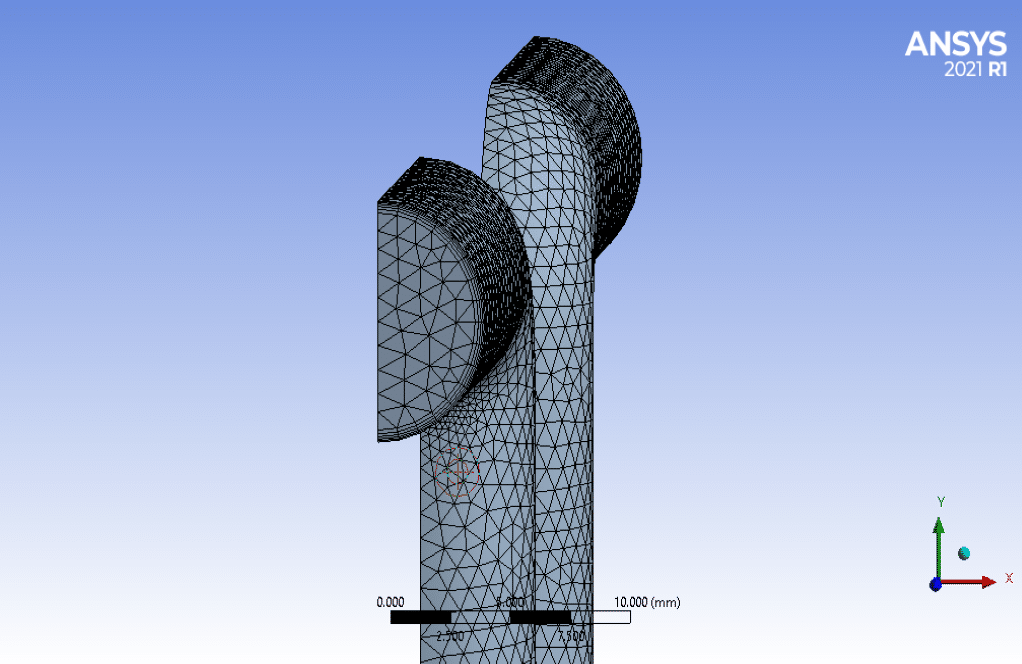
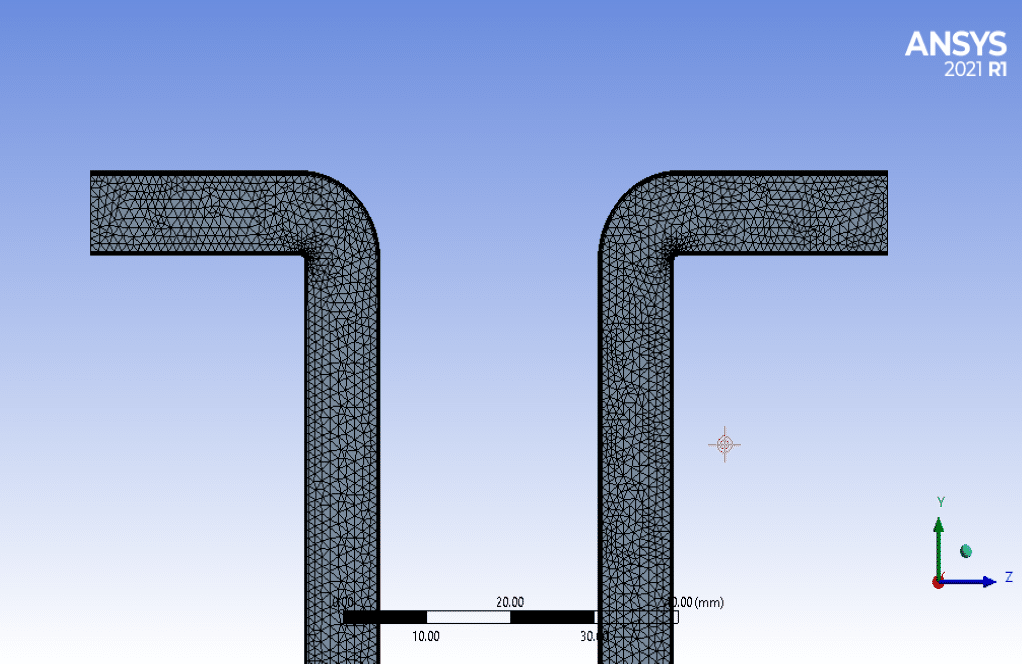
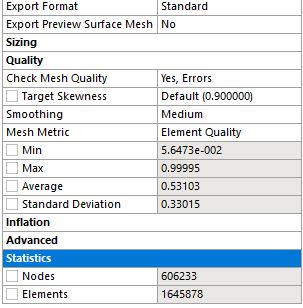



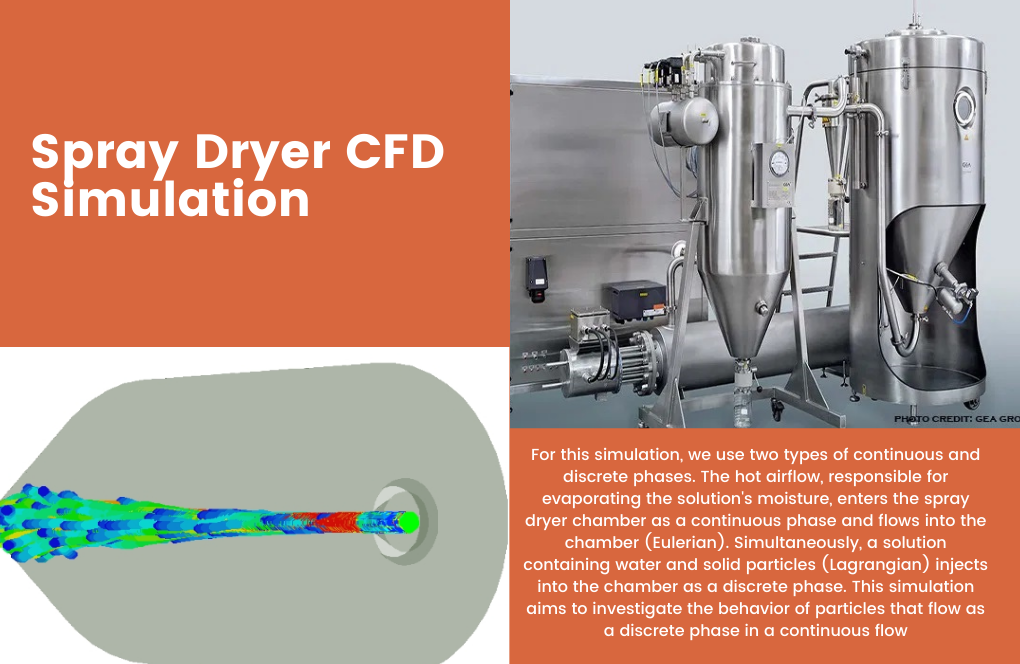
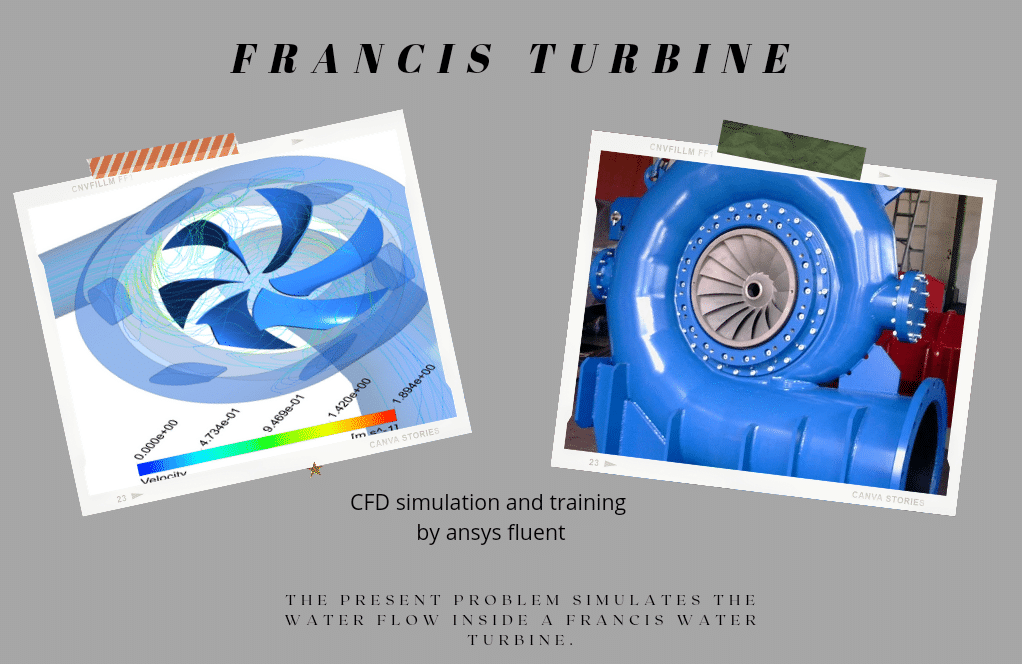

Dr. Fred Hill –
I am extremely satisfied with the comprehensive simulation of the Evacuated U-bend Solar Collector and how well the results from the training matched the paper’s outcomes. The mesh quality is impressive and taking into account gravity in the simulation really spotlights the attention to detail. Could you provide insights on how solar radiation interaction was modeled, particularly in relation to the glass tube’s vacuum and selective surface?
MR CFD Support –
We are delighted to hear that you found the training helpful and you’re satisfied with the results that matched the paper’s findings. The solar radiation is modeled with a uniform heat flux imposed on the tube walls to simulate the sunlight’s interaction. The evacuated glass tube and selective surface effects are indirectly taken into account through the boundary condition of heat flux, which represents the efficient heat transmission due to the vacuum insulation and selective absorbing properties. This setup ensures a more precise replication of solar heat gain corresponding to an actual evacuated U-bend solar collector’s performance.
Carmel Mosciski –
I noticed that the simulation results show a 4.86 Nusselt number compared to the paper’s result of 4.95. Could you explain what factors might contribute to this slight difference in the Nusselt number between the actual project simulation and the paper validation?
MR CFD Support –
The slight difference in the Nusselt number between the model simulation and the paper’s result can be attributed to several factors. There may be differences in the meshing strategy or grid density, discretization methods, convergence criteria, or the implementation of boundary conditions. Furthermore, variations in material properties or the assumptions made regarding the thermophysical properties and turbulent model in the numerical setup could also impact the Nusselt number. Minor deviations are expected when replicating experimental or previously published data in a numerical simulation due to these potential variations.
Twila Roberts V –
I was delighted by how well-organized the simulation process was in the course, yet I’d love additional clarification on how accurately the simulation predicted the efficiency compared to real-world results.
MR CFD Support –
Thank you for the kind words! I’m glad you appreciated the structure of the course. Our simulation closely mirrors real-world results, with high validity in predicting U-bend Solar Collector efficiency. In the validation step, the average Nusselt number obtained from our simulation was 4.86, closely matching with the paper result of 4.95, demonstrating the accuracy of our methods and models.
Jettie Harris I –
I’ve noticed the simulation showed great accuracy compared with the paper result for the Nusselt number. Were there any challenges encountered when trying to match the simulation data with the numerical values provided in the reference paper?
MR CFD Support –
Admin has not reported any specific challenges in the review detail. We strive for precision and closely match our simulation results with authoritative reference data, ensuring accuracy and reliability in our training materials. Thank you for the positive feedback!
Mrs. Margaret Runte –
I’m impressed with the level of detail in your Evacuated U-bend Solar Collector project. Can I get more information regarding how the gravity effect was considered in the simulation setup?
MR CFD Support –
In this simulation, the gravity effect has been taken into account to correctly predict the natural convection phenomena that can occur as the fluid heats up. ANSYS Fluent allows for the specification of gravitational acceleration when setting up the operating conditions. This is crucial for accurate modeling of buoyancy-driven flow, which is particularly relevant in solar collector simulations where temperature gradients result in density variations, influencing fluid movement. To enable gravity, you would go to the ‘Operating Conditions’ dialog box in Fluent and simply specify the acceleration due to gravity in the appropriate orientation that corresponds to your model setup.
Modesto Swaniawski –
I’m intrigued by how the U-tube’s temperature distribution looks. Was the simulation able to accurately capture the temperature gradients expected in such a system?
MR CFD Support –
I’m thrilled to hear about your interest! Yes, the simulation captured the temperature gradients effectively. As the warm water flowed through the U-tube, it absorbed more heat due to the uniform heat flux on the tube walls. This resulted in a gradual increase in temperature from inlet to outlet, with the highest temperatures at the outlet reflecting the efficient heat transfer from the walls to the water. You can visualize the temperature distribution clearly in the provided contours, showing a realistic representation of the expected temperature gradient.
Dr. Pamela Upton Sr. –
I’m impressed by the numerical validation conducted in this ANSYS Fluent training for the Evacuated U-bend Solar Collector! The comparison with the paper results shows an excellent understanding of the CFD modelling process, and it demonstrates the ability of the training to achieve accurate simulations. Well done!
MR CFD Support –
We appreciate you taking the time to write this kind review! It’s wonderful to hear that our Evacuated U-bend Solar Collector training was able to meet your expectations and provide a solid groundwork for accurate CFD simulations. If you have any more questions or need further assistance, please feel free to reach out. Thank you for choosing our training services!
Dr. Armando Boehm III –
I was thoroughly impressed with the detail and the depth of the sessions. The validation against paper results was particularly valuable in building confidence in the effectiveness of the methods applied.
MR CFD Support –
We greatly appreciate your feedback! It’s rewarding to know that you’ve found the validation aspect helpful for reinforcing the reliability of our simulations. If you have any more questions or need further assistance, don’t hesitate to reach out!
Malinda Hand –
The detailed analysis and results from the Evacuated U-bend Solar Collector training clear up a lot of questions! I was impressed with the heat flux setting for the simulation – is that a standard value for solar collectors or did it come from specific research for this type of collector?
MR CFD Support –
The heat flux setting of 950 w/m^2 used in the simulation is a specific value that typically represents the power delivered by solar radiation under clear sky conditions around noon. It may vary depending on geographical location, time of year, weather, and time of day. This value aims to closely mimic real-world solar radiation conditions that would impact a U-bend solar collector so that the simulation results are as practical and relevant as possible.
Kylee Mayert –
The presentation and validation of the results are quite detailed, and the comparison with the paper results showcases the accuracy of the simulation. Excellent work ensuring that the Nusselt number from the simulation aligns closely with the findings in the referenced paper!
MR CFD Support –
Thank you for your thoughtful review! We’re pleased to hear that the detailed results and comparison to the paper met your expectations. We aim to provide accurate and reliable simulations, and your feedback reaffirms our commitment to quality. If you have further inquiries or need assistance with future projects, please don’t hesitate to reach out.
Ms. Jazmyn Larson –
This training sounds unparalleled, especially with the meticulous attention to mesh quality and boundary conditions. Thanks for explaining how you executed the simulation!
MR CFD Support –
We’re glad that you’re pleased with the precision of our CFD simulation training! It’s our goal to provide clear and thorough educational content. If you have any further questions or need assistance with your learning journey, we’re here to help. Thank you for your positive feedback.
Prof. Lilyan Luettgen –
The hands-on training simplified the complex concepts of this simulation. Would highly recommend for anyone interested in solar collector design!
MR CFD Support –
Thank you for your praises! We’re glad to hear that our training helped clarify the complexities involved in simulating solar collectors. It’s always great to receive feedback that our products are making a real impact. If you ever have any more questions or need further assistance, feel free to reach out!
Bonita Kuhn –
The explanation of the project has detailed the simulation setup excellently. I especially appreciate the inclusion of numerical validation against the literature which provides confidence in the accuracy of your model.
MR CFD Support –
We are thrilled to hear that the detailed simulation setup and its alignment with the literature have met your expectations. Your appreciation is highly valued, and we hope our product has contributed to your understanding.
Sandy Douglas –
This training material on the Evacuated U-bend Solar Collector is truly insightful. I appreciate how detailed the project description is and the clear explanation of the validation against the research paper. The numerical analysis provides confidence in using the training for educational or practical applications.
MR CFD Support –
Thank you for your kind words! We are thrilled to know that you found the Evacuated U-bend Solar Collector project material detailed and informative. It’s our goal to provide quality training that enables both learning and application in practice. We appreciate your feedback and are glad the numerical validation added to the credibility of the study.
Mr. Alessandro Rolfson Sr. –
Wow, the detailed breakdown of the Evacuated U-bend Solar Collector simulation is impressive! It’s great to see such a thorough validation against the paper results. I was especially interested in the detailed setup, from mesh quality to boundary conditions and the solver setup. The comparison of the Nusselt number from the simulation with the paper results shows the accuracy of the training exercise. Great work!
MR CFD Support –
Thank you for your warm feedback on our Evacuated U-bend Solar Collector training module. We are thrilled to hear that you appreciated the meticulous presentation of the simulation process. Our aim is to provide educational content that not only deepens our customers’ understanding but also stands up to rigorous academic standards. Achieving such a close match with published results reaffirms the quality and effectiveness of our teaching approach. Thanks again for your review!
Devante Dietrich –
The provided information for the Evacuated U-bend Solar Collector project is thorough and informative. The course clearly demonstrates the application of CFD techniques to validate research findings, in this case, the efficiency of a solar collector. Appreciate the detailed step approach, from setting the boundary conditions and material properties, to the choice of solver and discretization methods. Comparison to the paper’s result validates the simulation’s accuracy. Fantastic learning resource!
MR CFD Support –
Thank you for your positive feedback on our Evacuated U-bend Solar Collector CFD Simulation project and recognizing the detailed methodology we present. We’re delighted to hear that it served as an effective learning resource for you and appreciate the time you took to share your thoughts. If you have any more questions or need further assistance, feel free to reach out to us!
Dr. Thomas Hessel PhD –
I recently completed the Evacuated U-bend Solar Collector ANSYS Fluent training and I’m impressed by how effectively the course enabled me to replicate the results of the paper. The clarity of the instructions and the quality of the training materials were exceptional. I was particularly pleased with the explanation of how to handle the complexities associated with the temperature variations and solar radiation effects on the system. The result comparison with the paper provided a great sense of accuracy and reliability of the simulation process.
MR CFD Support –
Thank you for sharing your positive experience with our Evacuated U-bend Solar Collector ANSYS Fluent training. We’re very glad to hear that our course materials and instructions were clear and helpful to you. It’s wonderful to know that the comparisons with the research paper added value to the training by validating the simulation’s accuracy. We appreciate your feedback, and if you ever have more questions or need further assistance, we’re here to help!
Prof. Jennie Bechtelar MD –
The simulation results for the Nusselt number seem close to that of the paper’s findings. As a new learner to CFD, may I inquire if discrepancies between the simulation and paper values can arise from the meshing process?
MR CFD Support –
Yes, discrepancies between simulation and paper values can indeed arise due to variations in the meshing process among other factors. The quality of the mesh, such as the number of elements, their distribution, and refinement in critical areas can affect the accuracy of the simulation results. Ensuring a mesh that is fine enough to capture the necessary flow features without becoming too computationally expensive is a delicate balance and can lead to slight variations in results like the Nusselt number.
Dr. Emerald Bradtke –
I am thoroughly impressed with the comprehensive training on the Evacuated U-bend Solar Collector using ANSYS Fluent. The high level of detail and empirical validation with a research paper gives it great credibility. Just a quick thought—how does the use of nanofluids impact the efficiency compared to using plain water?
MR CFD Support –
Thank you for your compliment! When nanofluids are used in a solar collector versus plain water, the enhanced thermal properties of the nanoparticles can significantly improve the thermal conductivity of the fluid. This results in better heat transfer, potentially increasing the thermal efficiency of the solar collector. These effects were taken into account in the project by analyzing the effect of nanoparticle shape, as referenced in the paper validation.
Raven Leannon –
I am very impressed with the detailed explanation of steps included in the simulation process for the Evacuated U-bend Solar Collector project. The validation with the paper results offers valuable credibility to your work. Well done!
MR CFD Support –
Thank you for your kind words! We’re thrilled to know that our training material met your expectations and that you found the validation aspect particularly valuable. If there’s anything else you’d like to explore or learn, please don’t hesitate to reach out to our team.
Janiya D’Amore IV –
I was so impressed with the clarity and detail in this Evacuated U-bend Solar Collector training. The numerical validation against the paper’s result looked spot-on. Learning how to manage heat transfer characteristics in a simulation environment definitely feels empowering for my future projects!
MR CFD Support –
Thank you for your positive feedback! We’re thrilled to know that you found the training informative and empowering. Accuracy in numerical validation is something we strive for to ensure that our users can trust our simulations. We look forward to supporting your future projects and learning needs.
Amalia Wisozk –
I am impressed by the level of detail in the description of the simulated Evacuated U-bend Solar Collector project. It’s great to see that you have validated the results against a paper, showing due diligence in your computational approach. Could you please provide clarity on how the solar radiation intensity is accounted for in the simulation and its impact on the heat flux applied to the tube walls?
MR CFD Support –
In our simulation, the solar radiation intensity is taken into consideration by applying uniform heat flux on the tube walls. This is an approximation that simplifies the actual distribution of solar energy. The specific value of 950 W/m2 for the heat flux represents the energy from the Sun concentrated onto the tube, simulating the effect of solar radiation on the collector. This model allows us to assess the heat transfer efficiency of the solar collector effectively. The impact of this applied heat flux results in an increase in water temperature as it flows through the tube, successfully capturing the performance of the Evacuated U-bend Solar Collector in real operation conditions.
Robb Hartmann –
The project delivery was fantastic. I appreciated the rigorous validation with the paper results—great work conveying a thorough understanding of the evacuated U-bend solar collector’s simulation.
MR CFD Support –
Thank you so much for your kind review and for recognizing the effort put into our project to simulate the evacuated U-bend solar collector. The team is glad to hear that you appreciated the validation with the paper results. We aim to provide comprehensive and accurate learning products to help our customers evaluate real-world applications effectively. If you need any further information or assistance, don’t hesitate to reach out!
Bert Mante –
I was impressed by the detailed approach to simulating the Evacuated U-bend Solar Collector. The precision in mesh quality and the inclusion of the inflation layer around the tube’s boundary show a careful setup aimed at accurately capturing the heat transfer phenomena. Also, the matching of the average Nusselt number with the paper’s result is commendable. Great work on maintaining accuracy with such complex systems!
MR CFD Support –
Thank you for recognizing the efforts put into simulating the Evacuated U-bend Solar Collector. Accuracy and attention to detail are crucial for CFD simulations, especially concerning heat transfer efficiency and the Nusselt number correlation with empirical data is a testament to the validity of our simulation approach. Your appreciation motivates us to continue delivering high-quality CFD training products.
Demetris Cummerata –
I was fascinated by the clarity of the results in relation to the paper’s findings. How does the efficiency of this Evacuated U-bend Solar Collector change with different flow rates?
MR CFD Support –
Thank you for your interest in the Evacuated U-bend Solar Collector project. The efficiency of the solar collector can indeed change with different flow rates. Higher flow rates can enhance the heat transfer coefficients due to increased turbulence and convective heat transfer; however, if too high, it might also increase the pump power needed which can diminish the overall efficiency. There’s a compromise to be maintained between the flow rate and efficiency to optimize the system performance based on specific application requirements. For the precise effect on this particular model, additional simulations varying the mass flow rate would be needed to analyze the trend in efficiency.
Mr. Dalton Bosco –
I’ve gone through the simulation training for the Evacuated U-bend Solar Collector and found the overview incredibly insightful. Using ANSYS Fluent for the simulation looked comprehensive. However, could you provide some clarification on how the heat flux boundary condition is applied to the model? Does it change over the length of the tube or is it maintained as a constant value?
MR CFD Support –
In the project description for the Evacuated U-bend Solar Collector simulation, a uniform heat flux boundary condition is applied across the entire surface of the tube. This means that the same amount of heat per unit area (950 w/m2) is added all over the tube. The heat flux is consistent and does not change over the length of the tube, allowing for the study of the conduction through the copper walls and the convection into the fluid inside uniformly.
Adam Bailey –
I used this CFD training product and found it extremely detailed. It helped me understand the different aspects of solar collector simulations clearly. Great work!
MR CFD Support –
Thank you for your positive feedback! We’re delighted that our training on Evacuated U-bend Solar Collector CFD simulation was informative and valuable to your understanding. We strive to present thorough and enlightening content. If you have any more questions or need further assistance, we’re always here to help!